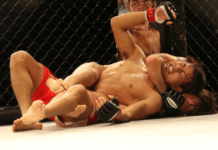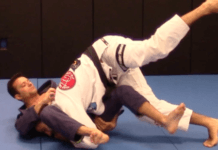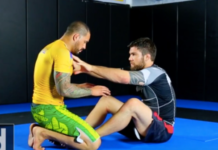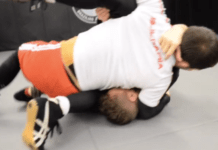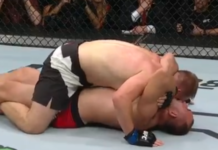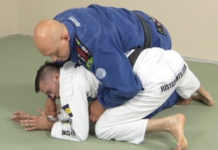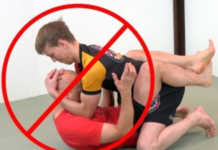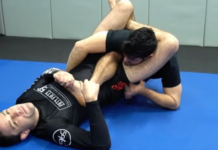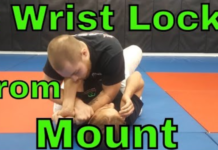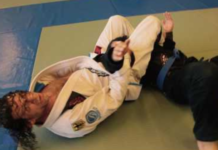If you have practiced BJJ for a while now, chances are that you have already learned the basic submission moves. Moves like the Kimura, Americana, triangle choke, and armbar should be known to most of the novices in BJJ. However, once you master these basic moves, you will be able to add additional moves to your arsenal. And one of these moves is the kneebar.
The BJJ knee bar is one of the most effective, potentially devastating moves that you can master. Make sure to practice it until you get good at it – and you will undoubtedly be surprised at its effectiveness.
Kneebar 101
The basis of this move is that you will be able to use it to snap someone’s knee in half if you perform it right. If you can see the human knee in your eye, then you can see how it moves. It can retract and flex, but it cannot overextend. Well, with the kneebar you will be using this mechanism to your advantage and you will try to overextend your opponent’s knee in order to tap him out.
How to get to the kneebar position
At the gist of it, in order to get to a kneebar, you will have to create a fulcrum of your body and your opponent’s leg, grab your opponent’s leg and pull it so that you will overextend it at the knee. And there are many ways to get to this position. One way in which you can get to it would be from the knee-shield position where you’re in half-guard. All you need to do here is put your arm under your opponent’s shin and over his thigh, and then step over his torso while rotating your body and grabbing his leg. If you do this properly, you will have a kneebar.
The mistake many BJJ practitioners typically make is they don’t mind their legs a lot. But the legs are very vulnerable body parts, especially if you’re dealing with a proficient leg locker. So, if you happen to be in the mount position – or even in top side-control – and you see that your opponent’s attention is focused at his upper body, then all you need to do is to shift your attention towards his legs and grab one of them. Create the fulcrum and overextend the knee – this will result in an immediate tap out.
The dangers of the kneebar
There are a couple of dangerous moves in the BJJ arsenal. To be fair – all of the submissions in BJJ can be devastatingly powerful. For example, something as simple and as innocuous looking as the rear naked choke can result in not only sleeping your opponent but also causing permanent brain damage and even death in extreme cases if you’re not careful and get carried away. But typically, most people haven’t had any issues with the rear naked choke – typically the opponent goes to sleep and his body goes limp, and the fight stops there.
But the case with the knee bar is much more delicate than this. It’s one thing to go to sleep by accident by not tapping on time – and it’s entirely another thing to have your knee snapped in half by not tapping on time. So, if you’re rolling for practice and you include kneebars in your game – make sure that you first discuss how you will go about this move with your opponents. Whatever you do, don’t overextend the knee of your opponent – even if he is acting tough and doesn’t tap immediately. You should feel confident in this move if you just grab your opponent’s leg and you feel like you’re able to overextend the knee – without actually doing it. Generally, the kneebar is a safe move as it may take some force to break the knee. But if you’re not careful, it may cause a devastating injury to your opponent.
Defending the knee bar
The best thing to do when it comes to defending this move is to not allow your opponent to get in the kneebar position in the first place. Make sure that you’re always careful about the vulnerability of your legs. Many people make the mistake of turning their knee violently to the side when they get caught in a kneebar. This is a terrible thing to do if you want to escape the kneebar. Sure, it may work sometimes – but there is a big risk that you will end up destroying your ligaments if you twist your knee without your foot following suit.
Be very mindful of moving your knee when it’s in a compromised position. If you can find a way to get out – then go about it slowly and control your movements. But if your knee is caught and you can’t do anything about it, don’t go crazy and start rolling and twisting your knee. Tap out if you have to – it’s not the end of the world.
Check also:
- Heel hook: How to Do and Defend this Leg Lock
- Toe Hold in BJJ: How to do,defend and why it can be dangerous
- Calf Slicer: Extremely Painful Submission

